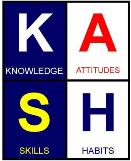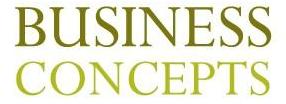
(Since we hate spam too we never share information.)
© 2010 WJG Business Concepts
Executive Leadership Process
The Executive Leadership program offers a proven process to help you create an environment in which people will be excited about operationalizing the vision you have crystallized. It will provide you with techniques for aligning your resources and guidelines for effectively leading people to higher levels of performance. Some of the concepts are new. Some may be familiar. All of them can help you become an even better leader than you are today. They can also help you drive leadership qualities throughout your organization. The Executive Leadership program includes:
- The Challenge
- Leaders
- Valueship
- Core Values
- Identifying Values
- Transforming The Organization
- Vision
- Communicating the Vision
- Change
- Resistance to Change
- Leading During Times Of Change
- Alignment
- Goal Planning and Achieving Systems
- Creating Balance
- Personal Goal Achievement
- Organizational Goals
- The Principles of a Successful Plan
- Different Types of Goals
- Short-Range Goals
- Long-Range Goals
- Tangible Goals
- Intangible Goals
- Turning Goals into Sustainable Success
- Effective Planning
- A Solution for Every Obstacle
- Self-Motivation and The Courage To Act
- Strategies for Positive Growth
- Leadership and You
- Leadership Responsibility
- A Framework for Understanding
- Understanding Human Potential
- The Choice is Yours
- Formal Leadership
- A Concept of Leadership
- The Leader as Visionary
- The Leader as Coach
- The Leader as Mentor
- The Leader as Director
- Authority and Power
- Collaborating for Results
- The Benefits of Collaboration
- Sharing the Common Goals
- Rules for Collaboration
- The Three “C’s” of Collaboration
- Obstacles to Successful Collaboration
- Building Teams
- Why the Emphasis on Teams
- Creating Winning Teams
- Team Competency
- Team Leadership
- Supporting Successful Teams
- Developing Trust
- When are Teams Appropriate
- Understanding What Motivates People
- Fear
- Incentive
- Understanding Human Needs
- Physiology
- Safety
- Belonging
- Esteem
- Understanding Behavior
- Behavior and Conditioning
- Early conditioning
- Attitudes
- Influence From Family
- Developing Peak Performers
- Habit Formation
- The Attitude Factor
- Changing Attitudes
- Building Success Attitudes and Habits
- Leading People to High Performance
- Leadership Communications
- Developing Trust
- Connecting
- Empathy
- Active Listening
- Successful Feedback
- Barriers to Feedback
- Non-Verbal Communication
Team Leadership
To meet today’s challenges, you must ask yourself some difficult questions: Am I the best I can be? Do I provide goal directed leadership? How can I meet the needs of my people while satisfying the needs of my team? Am I current in my understanding and use of people knowledge and techniques to help individuals excel? Am I operating with yesterday’s knowledge in today’s world? Am I an effective team leader? Can I become more effective? How? These questions and more will be answered in the “Team Leadership” process. This is more than a learning program… it is a becoming program. In this program,you will focus on your many roles as a team leader and how you can effectively “become” a better individual and a better more effective leader. The “Team Leadership” process includes the following:
Team Leadership:
- Leaders
- Valueship
- Core Values
- Identifying Values
- Vision
- Communicating the Vision
- Change
- Resistance to Change
- Leading During Times of Change
- Alignment
- Creating Balance
- Personal Goal Achievement
- Organizational Goals
- The Principles of a Successful Plan
- Different Types of Goals
- Effective Planning
- A Solution for Every Obstacle
- Self-Motivation and the Courage to Act
- Strategies for Positive Growth
- Leadership Responsibility
- Understanding Human Potential
- The Leader as a Visionary, Coach,
- Mentor, and Director
- Authority and Power
- The Benefits of Collaboration
- Rules of Collaboration
- Creating Winning Teams
- Team Competency & Leadership
- Developing Trust
- Understanding Human Needs
- Behavior & Conditioning
- Changing Attitudes
- Leading People into High Performance
- Communication
As a LEADER, you need to understand why you and the people you work with may RESIST CHANGE and stay in the “Land of Status Quo.” There are four major reasons why people resist change.
The first is FEAR. Fear is internal; it’s in our head. There’s a saying that I am fond of, “Fear is the great crippler of human potential.” There’s also an acronym that uses the letters F, E, A, and R that defines what fear is. The acronym stands for “False Emotions Appearing Real.”
The second reason people resist change is because of EGO. The need to be right is a powerful human need. It’s a common problem with leaders, managers, and business owners.
The third reason why people resist change is to avoid CONFLICT. Because when you try to leave all the people back in the “Land of Status Quo,” you’ll create and get some conflict. It’s not fun, so many people just avoid it all together.
The fourth reason that people resist change is LACK OF PURPOSE. Without a sense of purpose, people become stagnant and complacent. People get burnt out.
As a LEADER of yourself and others, you have to overcome your own fear and help others overcome theirs by helping them change their mental attitudes that hold them back. You also have to make sure that your EGO doesn’t get in the way. By being open to new and different ways to view things, as well as being open to the feedback and insights of others, you create an atmosphere where change is not an “I’m right and your wrong” mentality. Of course, conflict is best handled through proper communication. It sounds simple on the surface, but we all know that it’s not. Finally, you have to develop a sense of purpose, for yourself, and your team. What’s your vision? Is it something that everyone understands and has a stake in?
Please follow this link for more information.
As a LEADER, you can’t inspire others to make that journey until you show them how it’s done.
How do you get through all the fear, doubt, noise, and obstacles to get to the “Land of Positive Change/Rewards?” Your dreams, your goals, and your vision have to be strong enough and deep enough to get you through it. You really have to demonstrate the characteristics of a leader, don’t you?
Leadership
20 Signs leadership may be failing in your company!
- Excessive meetings
- Preponderance of consensus-driven decision making. (Cover you behind mentality)
- Lack of personal accountability
- Time consuming and/ or meaningless performance evaluations
- Communication problems
- Difficulty terminating poor performers
- Personality conflicts and / or power struggles
- Difficulty keeping employees motivated
- Unacceptable results
- Time management problems
- Reactive rather than proactive thinking
- Micro-management
- Can’t do attitudes
- Chronically sagging sales
- Unproductive teams and / or ineffective teamwork
- Duplication of effort
- High staff turnover
- Failure to achieve quality standards
- Fear of making decisions
If any of these conditions exist in your company, this does not mean that you are an ineffective leader. It simply means that your company has leadership problems.


